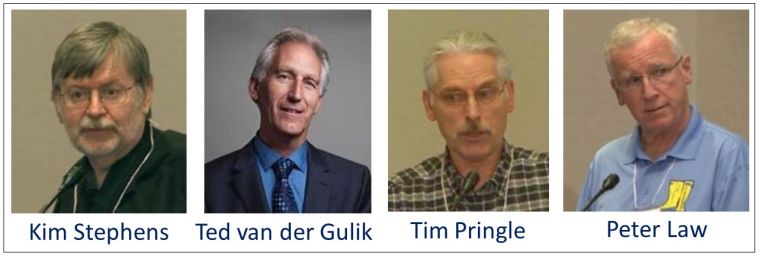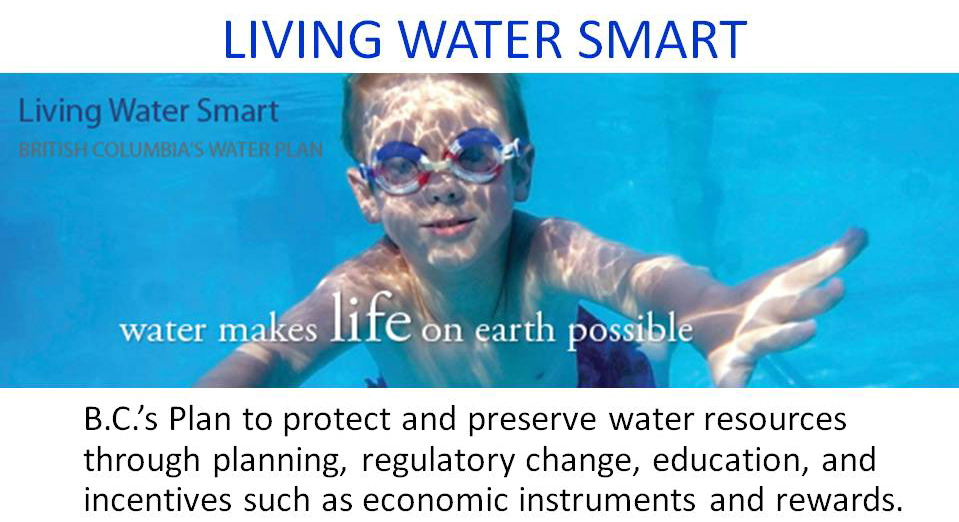OP-ED ARTICLE: Kim Stephens – Celebrating a decade of living water smart in B.C., but where to from here? (published in the Vancouver Sun in June 2018)
Note to Reader:
On Saturday, June 2nd 2018, the Vancouver Sun newspaper published an op-ed article co-authored by four members of the Partnership for Water Sustainability’s leadership team, namely: Kim Stephens, Ted van der Gulik, Tim Pringle and Peter Law. The article is reproduced below.

In 2008, the Living Water Smart program called British Columbians to action to create greener communities and prepare for climate change
Water defines British Columbia, and the rhythms of water are changing – winters are wetter and warmer; summers are longer and drier. Flood, drought, fire, wind and cold – extreme events are the New Normal. We are at a tipping point. When will communities adapt, and how?
In 2008, “Living Water Smart, British Columbia’s Water Plan” was the Province’s call to action, and to this day transcends governments. The vision:
“We take care of our water, our water takes care of us.”
“On the 10th anniversary of its release, we celebrate transformational initiatives set in motion by Living Water Smart,” wrote the four co-authors.

Collaboration in the Local Government Setting
The hard work of hope has resulted in a policy, program and regulatory framework that enables community-based action to adapt to the New Normal. Living Water Smart successes are defined by collaboration and a “top-down / bottom-up” approach. This brings together decision-makers and community advocates.
 “While legislative reform is a foundation piece, collaboration takes place outside the legislative framework,” Lynn Kriwoken stated in 2008. An Executive Director in the Ministry of Environment and Climate Change, she personifies continuity, commitment and leadership in bringing the Living Water Smart vision to fruition.
“While legislative reform is a foundation piece, collaboration takes place outside the legislative framework,” Lynn Kriwoken stated in 2008. An Executive Director in the Ministry of Environment and Climate Change, she personifies continuity, commitment and leadership in bringing the Living Water Smart vision to fruition.
“This is why we constantly emphasize that Living Water Smart is about motivating and inspiring everyone to embrace shared responsibility. Influencing behaviour and attitudes is at the heart of moving from awareness to action,” added Kriwoken.
Game-Changers Flowing from ‘Living Water Smart’
What Makes a Stream Healthy:
In Living Water Smart, the lynch-pin statement is:
“All land and water managers will know what makes a stream healthy, and therefore be able to help land and water users factor in new approaches to securing stream health and the full range of stream benefits”.
This vision statement guides the work of the Partnership for Water Sustainability, the hub for a “convening for action” network in the local government setting. The Partnership collaborates with the province, local governments, stewardship sector and First Nations to develop and mainstream approaches, tools and resources that advance “design with nature” outcomes.
Strategic Direction for Local Government:
Another game-changer flowing from Living Water Smart is “Asset Management for Sustainable Service Delivery: A BC Framework”. Led by Asset Management BC, the BC Framework sets a strategic direction for local government service delivery. It refocuses business processes on how physical and natural assets are used to deliver services, and support outcomes that reduce life-cycle costs and address risks.
Sustainable service delivery by local government occurs alongside associated evolution in community thinking. By managing the built and natural environments as integrated systems, local governments would incrementally move towards a water-resilient future as an outcome.
Value of Ecological Services:
Hydrology is the engine that powers ecological services. Thus, integration of the Partnership’s work within the BC Framework should accelerate implementation of the whole-system, water balance approach at the heart of the Partnership’s “Sustainable Watershed Systems, through Asset Management” program.
A pillar of Sustainable Watershed Systems is the Ecological Accounting Process. EAP establishes what the definable benefits of ecological services derived from creekshed hydrology are, what they may be worth to stakeholders, and how they may be maintained and enhanced. EAP has the potential to transform how communities make decisions about creekshed restoration.
Water & Food Security:
Call to Action


